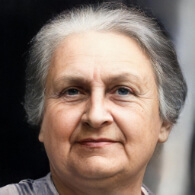Primary Classroom (Montessori)
In the Montessori approach, the Primary Classroom caters to children between the ages of three and six years. It typically encompasses preschool and kindergarten-aged children[1].
This multi-age grouping allows for a family-like environment in which younger children learn from the older ones and the older children reinforce their learning by teaching the younger ones. The classrooms are equipped with specific Montessori materials that encourage hands-on, self-paced, collaborative, and joyful learning[2].
In the Primary Classroom, children develop fundamental skills in areas like language, mathematics, sensorial activities, practical life exercises, and cultural studies. This forms a solid foundation upon which they build throughout their education.
Montessori Quotes on Primary Classroom
The environment must be rich in motives which lend interest to activity and invite the child to conduct his own experiences.
— Maria Montessori
Research and Critiques on Primary Classroom in Montessori
Pro
The Montessori Primary Classroom offers a carefully structured and individualized environment that fosters independence and love for learning. The mixed-age group fosters peer learning and social development.
Cons
Critics of Montessori education argue that the open structure may not work for every child, especially those who need more structure and direct instruction. Montessori materials and the need for specially trained teachers can make Montessori education more expensive than traditional education.
Comparison to Other Methods
In a traditional preschool or kindergarten setting, the focus is often on preparing children for formal schooling through structured activities and direct instruction. Play-based approaches like Reggio Emilia emphasize child-led activities and the role of the environment as a 'third teacher', but do not use the same kind of specialized learning materials as Montessori.
Glossary of Montessori Terms
The Glossary of Montessori Terms is a collection of specific terms and vocabulary that are related to the Montessori method of education, primarily focusing on the theory and practice for children aged 3 to 6. The jargon used by Montessori educators offers a unique insight into child development as discussed by Maria Montessori. The 'Montepedia Glossary of Montessori Terms' originated from a glossary that was compiled by the late Annette Haines from the Montessori Training Centre of St. Louis, at the request of Molly O'Shaughnessy from the Montessori Centre of Minnesota. The reason behind the creation of this glossary was to supplement O'Shaughnessy's lecture at the Joint Annual Refresher Course that took place in Tampa, Florida, in February 2001.[3] The glossary has since been expanded and updated with additional 'Montessori Terms'.
- 3-Hour Work Cycle
- Absorbent Mind
- Adaptation
- Adolescence
- Albums
- Advisor
- Analysis of Movement
- Casa dei Bambini
- Children of the Earth
- Children's House
- Choice
- Classification
- Concentration
- Concrete to Abstract
- Control of Error
- Coordination of Movement
- Cosmic Education
- Creativity/Imagination
- Cycle of Activity
- Development of the Will
- Deviations
- Didactic Materials
- Director
- Discipline from Within
- Earth Child
- Elementary Classroom
- Erdkinder
- Exercises of Practical Life
- False Fatigue
- Freedom of Choice
- Freedom within Limits
- Grace and Courtesy
- Great Stories
- Ground Rules
- Guide
- Help from Periphery
- Human Tendencies
- Imagination
- Independence
- Indirect Preparation
- Indirect Presentation
- Isolation of a Difficulty
- Intrinsic Motivation
- Job
- Kinderhaus
- Language Appreciation
- Language Acquisition
- Learning Explosions
- Materials
- Materialised Abstractions
- Mathematical Mind
- Maximum Effort
- Mixed Ages
- Montessori Materials
- Nido
- Montessori Materials
- Normalization
- Obedience
- Peace
- Personality
- Planes of Development
- Points of Interest
- Practical Life
- Phonemic Awareness
- Phonics Instruction
- Phonological Awareness
- Prepared Environment
- Presentation
- Primary Classroom
- Psychic Embryo
- Reading Comprehension
- Repetition
- Respect
- Self-Discipline
- Self-Regulation
- Sensitive Periods
- Sensorial Materials
- Simple to Complex
- Socialization
- Society by Cohesion
- Sound Games
- Three-Hour Work Cycle
- Valorisation
- Vocabulary Enrichment
- Work
Please help to translate this page into your local language
